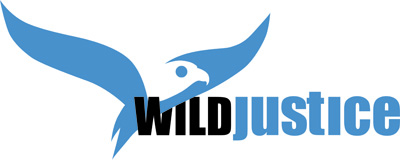How low will they go? An unfair advantage

The grouse shooting industry doesn’t like to talk about raptor (bird of prey) killing because it’s wildlife crime. It’s not good for an industry which supplies an expensive leisure activity to be underpinned by criminal activity. There are many reasons for wanting change (we’d say a ban) of driven grouse shooting and criminality is one of them.
Incidents of the illegal persecution of raptors on driven grouse moors are well documented and ongoing. They’re also woefully under-punished, with prosecutions few and far between, largely due to the difficulty of securing sufficient evidence and/or witnesses in remote locations. The cases that do make it through the courts are often stacked in favour of the defendant, who is represented by expensive senior lawyers (paid for by the grouse-shooting estate) up against the poorly-funded and under-resourced public prosecuting authority (CPS in England & Wales, COPFS in Scotland). Where a conviction is secured against these odds, strong sentencing options are available but are rarely applied consistently and often these cases result in the equivalent of a slap on the wrist for the offender, providing little deterrent for other would be raptor killers.
Driven grouse shooting is an industry with a problem. It seems many overseeing and working within the industry have a fixation; an urge that they can’t seem to fight, to eradicate raptors. This urge appears to be driving the perpetrators of raptor persecution to carry out shocking crimes against wildlife, as well as engage in acts of deception to cover up their crimes.
And so, in a series of blogs we will be asking the question – ‘How low will they go?’ Looking at case studies from a range of locations, affecting many species of raptors, we’ll look at the lengths that criminals will go to, either to kill birds of prey, or to hide the fact that they’ve done so.
An unfair advantage
How low will they go?
Using military grade equipment to find and kill birds of prey.
Species:
Likely multiple
Date:
Ongoing
Location:
Multiple
The crime:
The fight against raptor persecution is ever evolving – those tasked with detecting these crimes are using more and more advanced technology to monitor and record the illegal killing of birds of prey. But that technological advancement is not one sided; the driven grouse shooting industry is stepping up its tactics, too.
It’s been suspected in multiple cases that criminals illegally targeting birds of prey are doing so with the aid of military-grade equipment; using tools and technology to help them detect and kill raptors on and near driven grouse moors.
Tag data from birds of prey show that many persecution incidents take place under the cover of darkness. In theory it should be very difficult to find a bird of prey at night – when they’re likely to be roosting quietly under the cover of vegetation and darkness. But the data don’t lie. Investigators and the police believe criminals are using high-tech equipment such as thermal imaging binoculars, drones and scopes to locate roosting birds when they’re at their most vulnerable.
In one small area in the Highlands dominated by land managed for driven grouse shooting, eight satellite-tagged Golden Eagles disappeared in under a five-year period. Three of these eagles ‘disappeared’ from the same individual tree – an ideal Golden Eagle roost and a spot from which they could easily be shot under the cover of darkness, if someone used a thermal imager to find them.
It’s now obvious that some incidences of raptor persecution could only have occurred with the help of this sort of expensive, high-grade equipment. Criminals already have an unfair advantage over wild birds, but what chance have they got when they’re up against such advanced technology?
Our view:
Rather than moving away from the dark ages of raptor persecution, the driven grouse shooting industry is not only digging its heels in, but modernising the ways in which these crimes are carried out and to lessen the chances of detection.
Help us put a stop to this.
When an industry is underpinned by criminality, something needs to change. Those operating driven grouse moors have had plenty of opportunity to do so – but birds of prey continue to be illegally killed.
This is why, along with many other reasons, we at Wild Justice believe driven grouse shooting should be banned.
Over 65,000 people have signed our government petition calling for a ban so far. Help us reach 100,000 and secure a parliamentary debate:
- Add your name to our petition – click the button above.
- Send this blog to friends and family – click the WhatsApp icon below.
- Share this blog on social media, on BlueSky , Facebook or Twitter – click their icons below.
